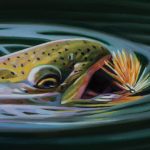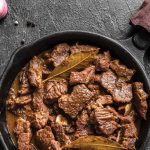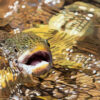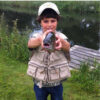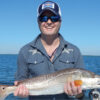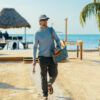Day One
The milk-chocolate colored gundog swam sure and steady in the tannic waters of the Sebasticook River’s East Branch near Pittsfield, south-central Maine. The hardwoods along the banks wore their early October raiment ranging from soft yellow to fire-engine red and many color shades in between. The contrast of autumn leaf color with the steady green of the evergreens was pleasing—and a bit distracting if you stared long enough.
Tag, my friend Scott Davis’ six-year-old Chesapeake Bay Retriever, seemed a bit confused and couldn’t find the downed duck—the river current pulled the woodie downstream. The poor dog couldn’t see the duck fall because the high sides of the boat obscured his view. Tag had seen where my shotgun was pointed when I pulled the trigger, and Chessie went in the direction after Davis released the trap door on the side of the camouflaged boat. He provided direction and Tag retrieved and brought the duck to the bank where the boat was tied up.
We would enjoy our afternoon hunt until the end of the legal shooting day, close to sunset. Our quarry was wood ducks, and plenty of them zipped down or upriver at high speeds or coursed by out-of-range. It was warmish, a light camouflage jacket was plenty, and puffy white clouds highlighted the partly sunny day.
I am thankful I finally joined Davis for a hunt. He’d been after me for years to get out with him for early season wood ducks; I was normally in the uplands chasing woodcock and partridge in the forests and fields at that time of year.
Most of my previous waterfowling adventures were for Canada geese on the Eastern Shore of Maryland, where birds show up in the tens of thousands and readily fly to well-placed decoys in fallow fields or on ponds, potholes and creeks. They’re like B-52s—big and somewhat lumbering in flight, but deceptively fast. And they cut a pretty good corner. Wood ducks, tiny in comparison, are more like F-16s because they’re fast and maneuverable. Both taste really good.
The Duck
When ducks fly from one place to another, they don’t do it slowly; they move with a purpose and don’t lollygag in the process. And the wood duck streaking up the river from my left was no exception. He honked above the water and flew at Mach 2.
Earlier, Davis told me it’s best to shoot when the bird is flying towards you—as opposed to engaging it straight out from the boat or blind, or when its moving away. But by the time I saw the dang thing, it was out from the boat. When I hoisted the gun and fired, it was moving away. But luck or skill prevailed, and the duck fell into the water.
Tag brought the drake to Davis, who guessed it hatched this past spring; it did not display the iconic, brilliant colors of a mature male wood duck. It was my first woodie, and one of three the daily bag limit allows.
In Maine we don’t get much of a chance to shoot woodies. They are the first ducks that move south, so their availability is limited to a week or two in early October. After the first good frosts, they’re gone faster than a Southern Maine Snowbird heading to Florida for the winter.
Wood ducks are comfortable in creeks, streams and rivers; they also prefer ponds, lakes, bottomland forests and freshwater marshes. Wood ducks like open water, especially with uncongested vegetation where they can forage. They eat seeds, fruits, insects, duckweed, beetles, snails and acorns. Acorns are everywhere this year, and that makes ducks happy.
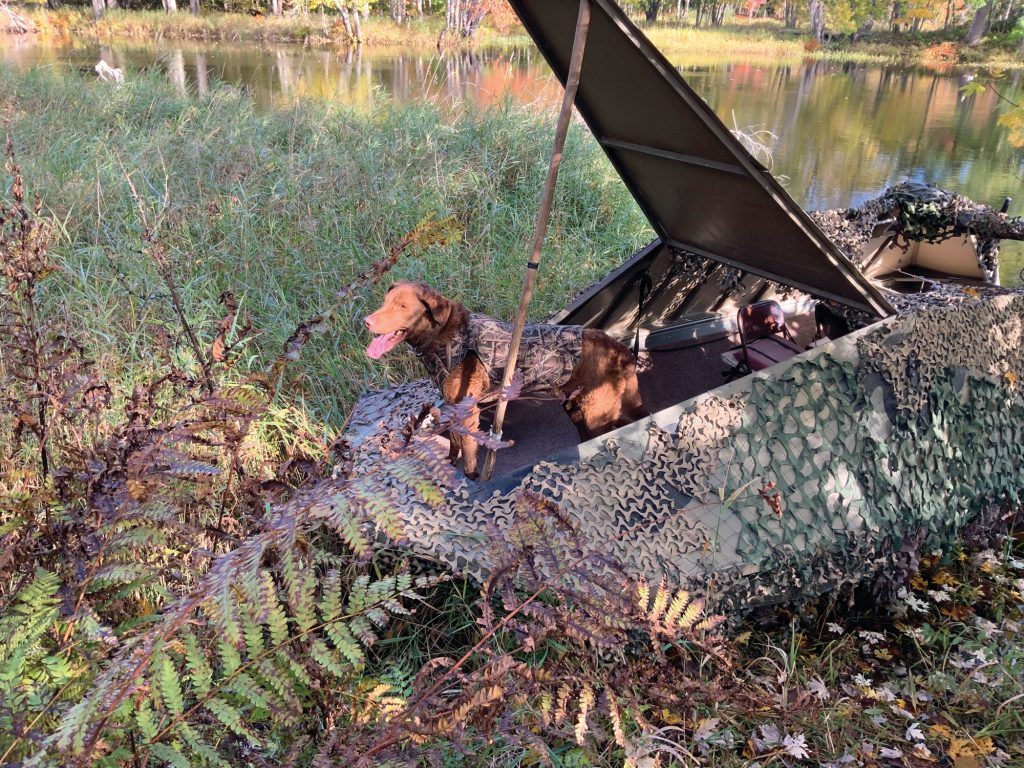
The Boat
Davis is a MDIF&W fisheries biologist and a Registered Maine Guide. When Lefty Kreh and I wanted to fish the Sebasticook River, we called Davis—and were never disappointed fly fishing for smallmouth bass under my friend’s unfailing guidance. He built his own 18-foot heavy-gauge johnboat; its aluminum shell clamps in place when fishing ends and duck season begins. The shell is covered with sturdy camouflage netting, and the boat, when anchored or tied to shore, is a duck blind like few others.
The boat is painted a fetching U.S. Army olive drab and powered by a 90-hp jet-drive outboard. It also has a kicker outboard—an 8 or 9.9-hp—but it was hidden by a camouflage cover. If you’ve ever seen the Zumwalt-Class stealth-guided missile destroyer at the Bath Iron Works on Maine’s Kennebec River, downriver from where we hunted today, you know what Davis’ boat looks like. (It’s about 292 feet shorter than the Navy vessel and not as well armed.)
We were tied up along the east bank of the river, and ducks flew up- and down-stream at their leisurely warp speed. I looked upriver and Davis looked downriver. We announced approaching ducks and in a split-second decided if and when to shoot.
Davis made appropriate wood duck sounds but was very judicious in his quacking. He believes in not overdoing it. It reminded me of what writer Nash Buckingham wrote in 1934: “A duck call in the hands of the unskilled is one of conservation’s greatest assets.”
The light gently faded, and we secured the shotguns and headed for the launch ramp a mile or so down the river. We took five woodies, one short of our combined limits, and it was a great couple of hours.
The Dog
The Chesapeake Bay retriever was bred in America in the 19th century to provide waterfowlers and market-hunters with a steady, sturdy hard-working dog that can tolerate winter and the cold waters of the Chesapeake Bay, our largest estuary. All retrievers—Labrador, Golden, and Chesapeake Bay varieties—derive from a common ancestor: the St. John’s Water Dog of Newfoundland. Sadly, the breed became extinct in the 1980s, but the wonderful dogs we cherish today carry the genes.
Chessies are known for their love of water and keen ability to retrieve birds on water and land. A medium to large gundog, Chesapeake’s have a wavy coat compared to the Labrador’s smooth coat. Tag is a wonderful representative of the breed and good company in the boat/blind. One of his endearing qualities is that he shakes the water off his wet coat on the riverbank, and not in the boat.
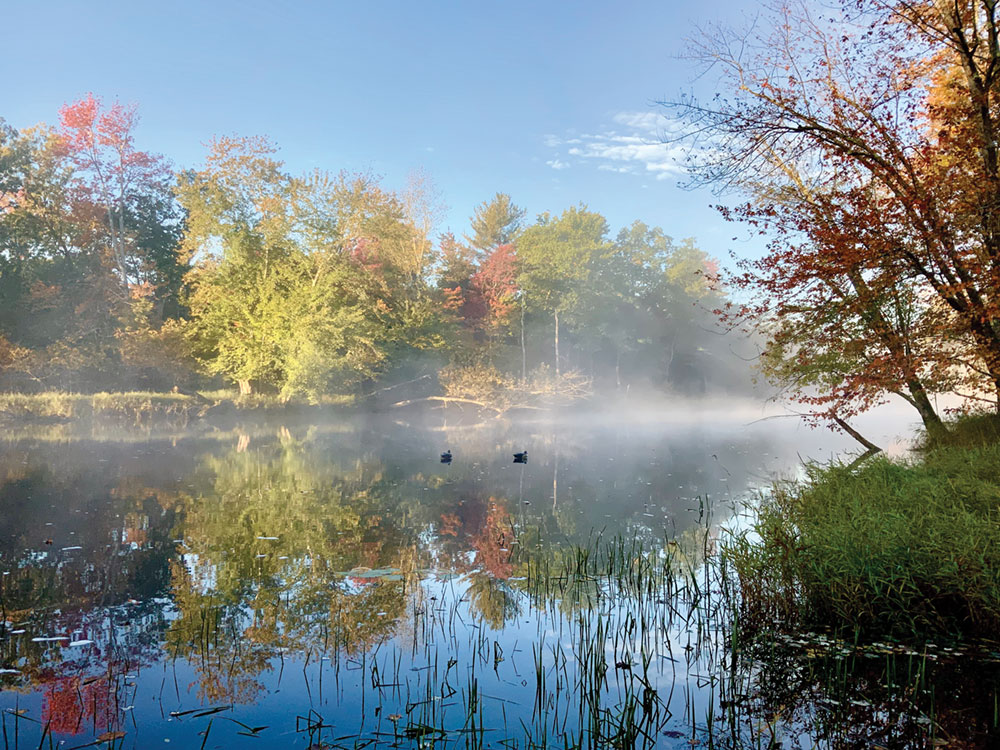
Day Two
Dawn broke over the river and a pleasing “sea smoke” gently lifted from the water. We didn’t engage early ducks because it was not yet legal time. A string of realistic Quack decoys bobbed in the steady current, and distant crows shouted at the awakening world. We took our position almost an hour before sunup.
A flight of seven or eight wood ducks screamed into view from our right, abruptly turned on the proverbial dime, and flared down toward the decoys. Davis and I rose as one and ducks fell. There’d be fresh duck for several dinners at home in Kennebunkport.
It was a fine hunt, and still plenty of season remaining for grouse and woodcock. And later it would be mallards, teal and black ducks too. In Maine, the Pine Tree State, life really is good. Outdoor writer Gene Hill sums it all up:
“If in a single day we smell coffee, dawn, gun oil, powder, a wet dog, woodsmoke, bourbon, and the promise of a west wind for a fair tomorrow—and it’s possible for us to reek ‘happy’—that’s just what we will do.”
Contact Scott Davis, Fish ‘N Fowl Guide Service in Burnham, at 207-453-8501. For waterfowl hunting information in Maine, visit www.maine.gov.
King Montgomery has contributed articles to The Virginia Sportsman since the first issue. He now lives in Kennebunkport, Maine. A version of this article appeared in The Maine Sportsman magazine.
Cover photo: Scott Davis pilots the boat back to the ramp as the day ends.


